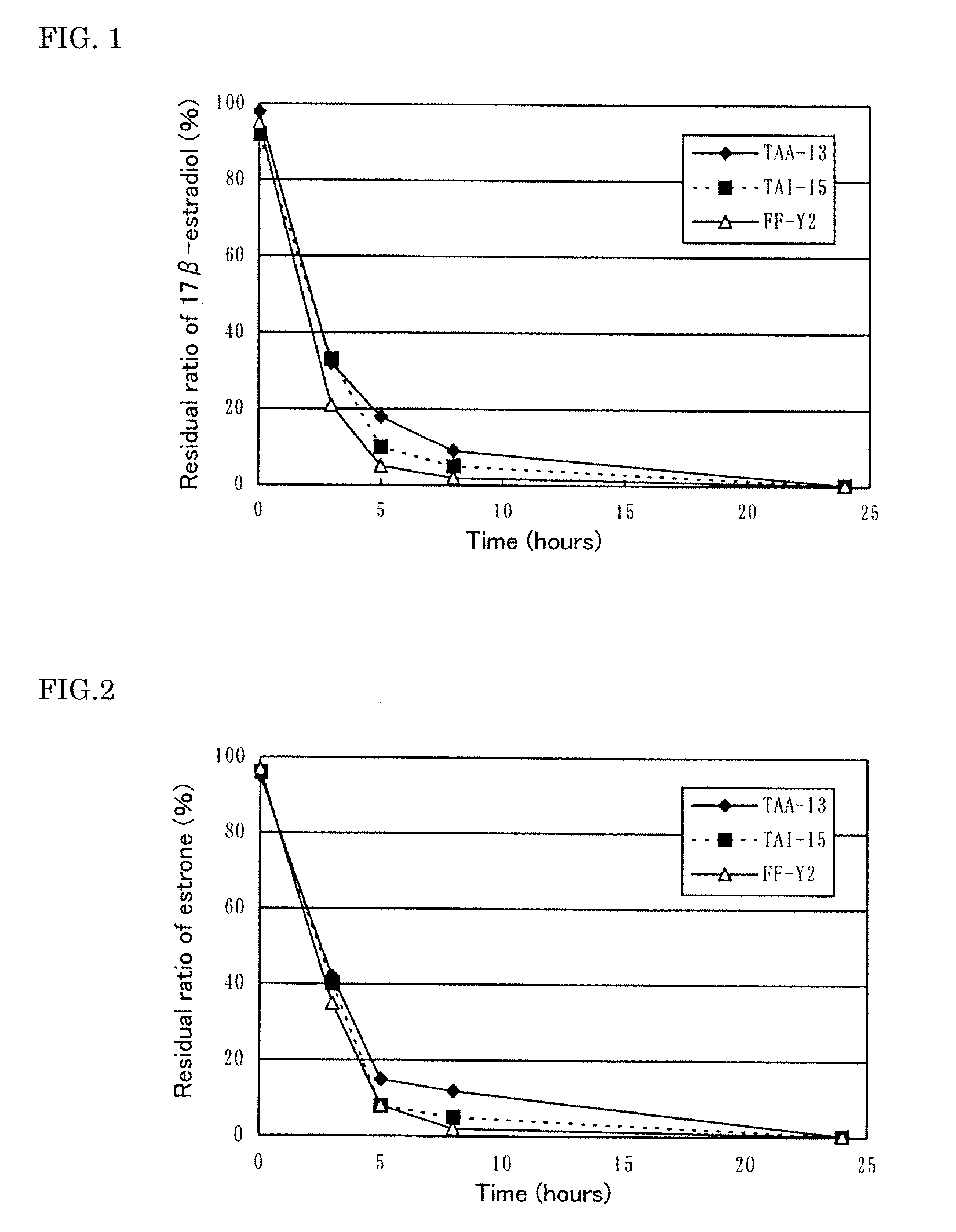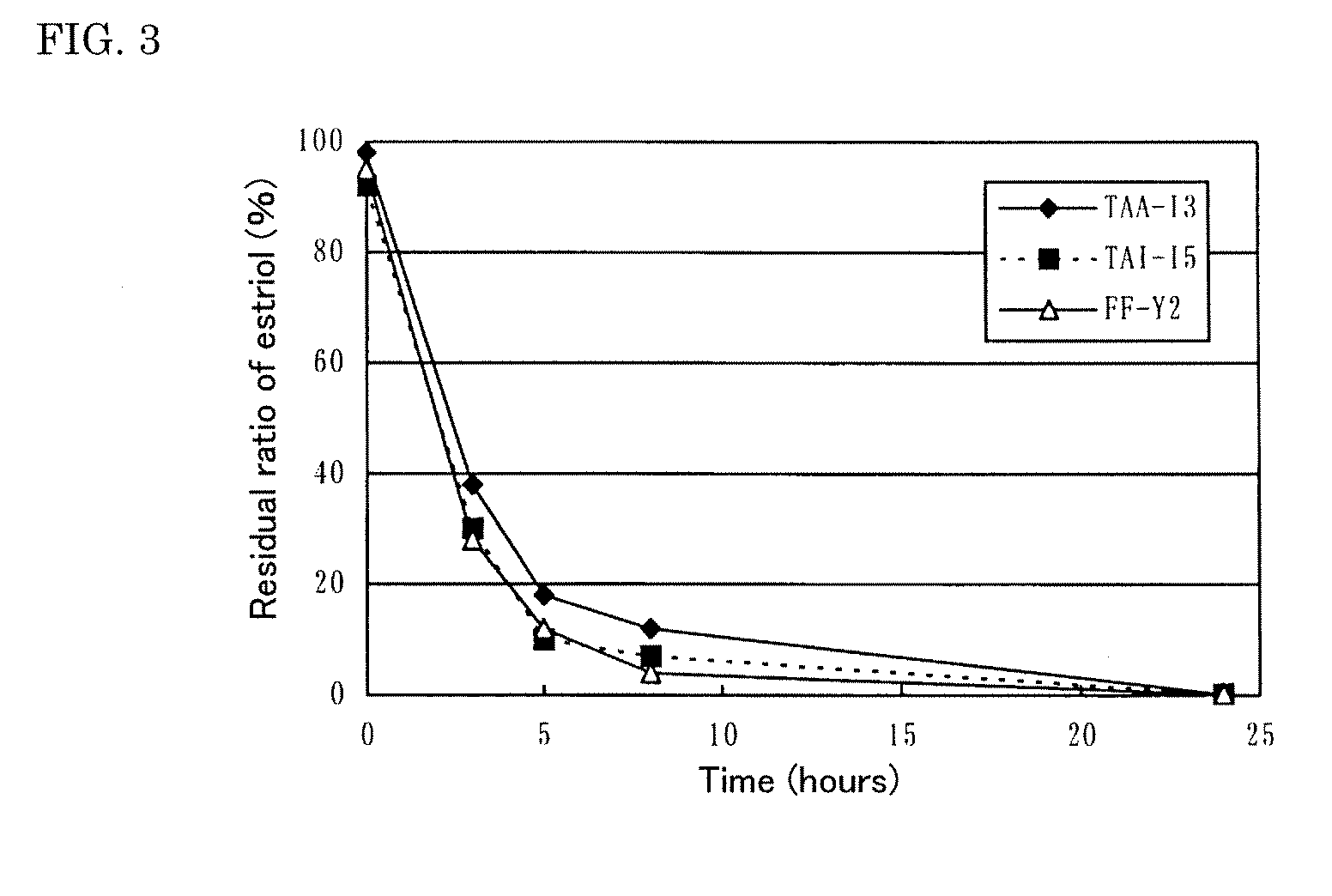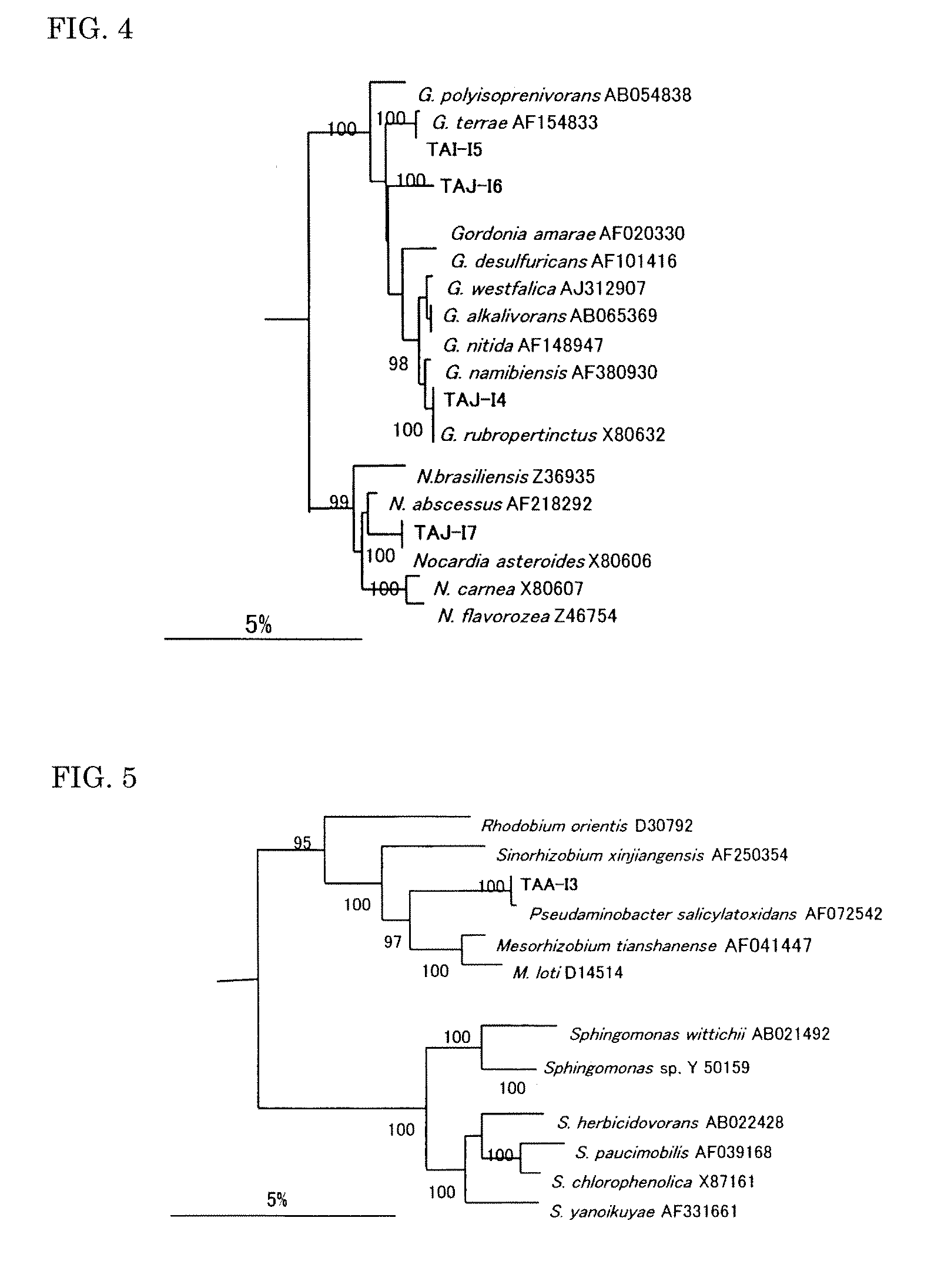Estrogenic substance degradable microorganism and use thereof
a technology of degradable microorganisms and estrogenic substances, applied in the direction of filtration separation, bacteria-based processes, separation processes, etc., can solve the problems of unbalanced ecosystems, inability to fertilize, and large abnormal growth of wildlife, so as to improve the environment
- Summary
- Abstract
- Description
- Claims
- Application Information
AI Technical Summary
Benefits of technology
Problems solved by technology
Method used
Image
Examples
example 1
Separation of Estrogenic Substance-Degrading Microorganism
[0057]The following MDG culture media 1 to 4 were filled into test tubes, each in an amount of 10 mL, and 17-estradiol was added as an estrogenic substance to provide a concentration of 0.1%, to obtain groups of enrichment culture media, one group consisting of four media. 1 mL of activated sludge or return sludge collected from each of the wastewater treating processes for Fushimi Wastewater Treatment Plant (indicated by F: Kyoto-shi, Kyoto), Tarumi Wastewater Treatment Plant (indicated by TM: Kobe-shi, Hyogo), Tamagawa-joryu Treatment Plant (indicated by TJ: Akishima-shi, Tokyo), Morigasaki Treatment Center (indicated by M: Ota-ku, Tokyo), Northern Second Wastewater Treatment Plant (indicated by H: Yokohama-shi, Kanagawa), Todoroki Environment Center (indicated by TO: Kawasaki-shi, Kanagawa), and the Tachikawa-Fujimi Treatment Plant (indicated by TA: Tachikawa-shi, Tokyo) was added to each test tube to...
example 2
Identification of Microorganisms Having Capability of Degrading Estrogen Substance
[0070](1) Identification of Strain Using 16S rDNA Sequence
[0071]A phylogenetic tree was prepared using the 16S or 18S rDNA sequence for nine stocks of estrogenic substance-degrading microorganisms which were selected by the ternary screening according to the following procedure to conduct strain identification.
(a) DNA Extraction from Microorganism
[0072]DNA was extracted using the benzyl chloride method from each of the pure culture microorganisms of the above nine strains. The microorganisms were cultured using YM slope agar medium at 30° C. for three days. 250 μL of a DNA extract buffer solution (100 mmol / L Tris-HCI, 40 mmol / L EDTA, 9.0 pH), 200 μL of benzyl chloride, and 50 μL of 10% SDS were added to each of the collected microorganisms, and the mixture was vigorously shaken at 50° C. for 30 minutes. After adding 150 μL of 3 mol / L sodium acetate, the mixture was centrifuged and the supernatant liqui...
example 3
Degradation of Estrogenic Substance Using Activated Sludge
[0078]Raw activated sludge was obtained from an actually operating sewage disposal plant to measure the activity of Gordonia terrae TA1-15 strain, which is regarded to exhibit strong estrogenic substance-degrading activity and to have a comparatively high level of safety.
(1) Selection of Microorganism Immobilizing Carrier
[0079]Commercially available microorganism immobilizing carriers were obtained to examine how the TA1-15 strain adheres to each carrier. Polypropylene, ceramic, alumina-silica, and poly(vinyl alcohol) fixed activated carbon were used as the material of the immobilizing carrier. First, the microorganism of the TAI-15 strain was mass-cultured in a jar fermenter to a concentration of 107 cells / mL. Then, the above carriers, each in an amount of about 150 g, were added to 1 L of the culture solution, followed by shaking for 24 hours to immobilize the TA1-15 strain on each of the carriers. After 24 hours, the carri...
PUM
| Property | Measurement | Unit |
|---|---|---|
| temperature | aaaaa | aaaaa |
| concentration | aaaaa | aaaaa |
| temperature | aaaaa | aaaaa |
Abstract
Description
Claims
Application Information
 Login to View More
Login to View More - R&D
- Intellectual Property
- Life Sciences
- Materials
- Tech Scout
- Unparalleled Data Quality
- Higher Quality Content
- 60% Fewer Hallucinations
Browse by: Latest US Patents, China's latest patents, Technical Efficacy Thesaurus, Application Domain, Technology Topic, Popular Technical Reports.
© 2025 PatSnap. All rights reserved.Legal|Privacy policy|Modern Slavery Act Transparency Statement|Sitemap|About US| Contact US: help@patsnap.com



